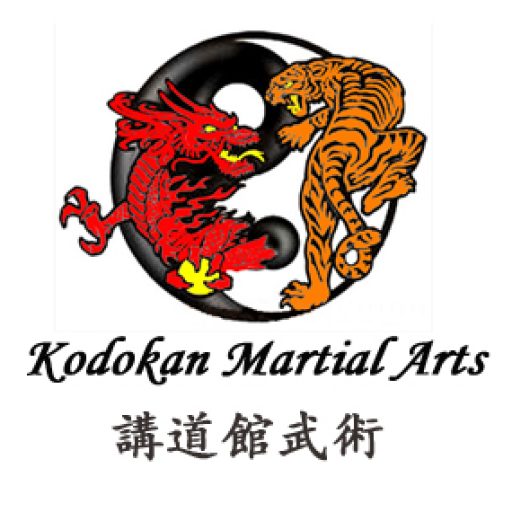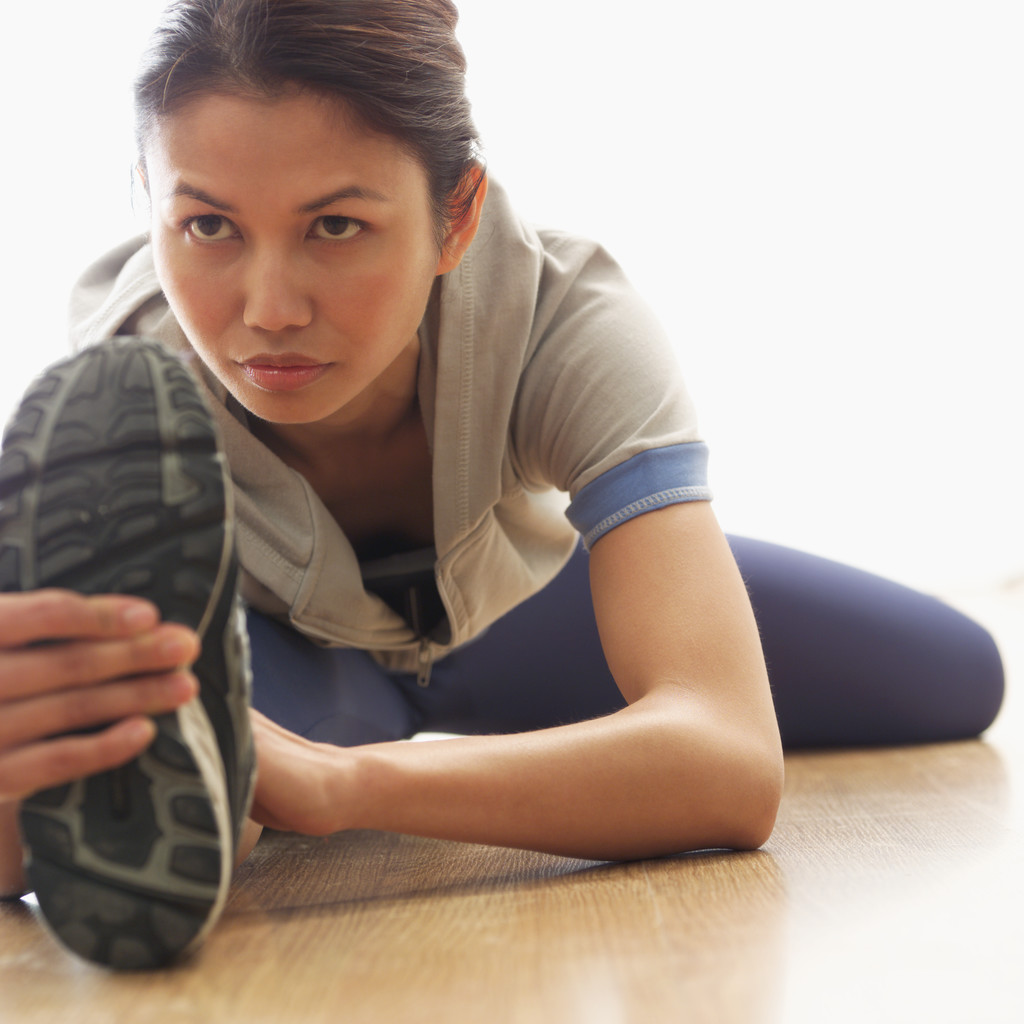Flexibility
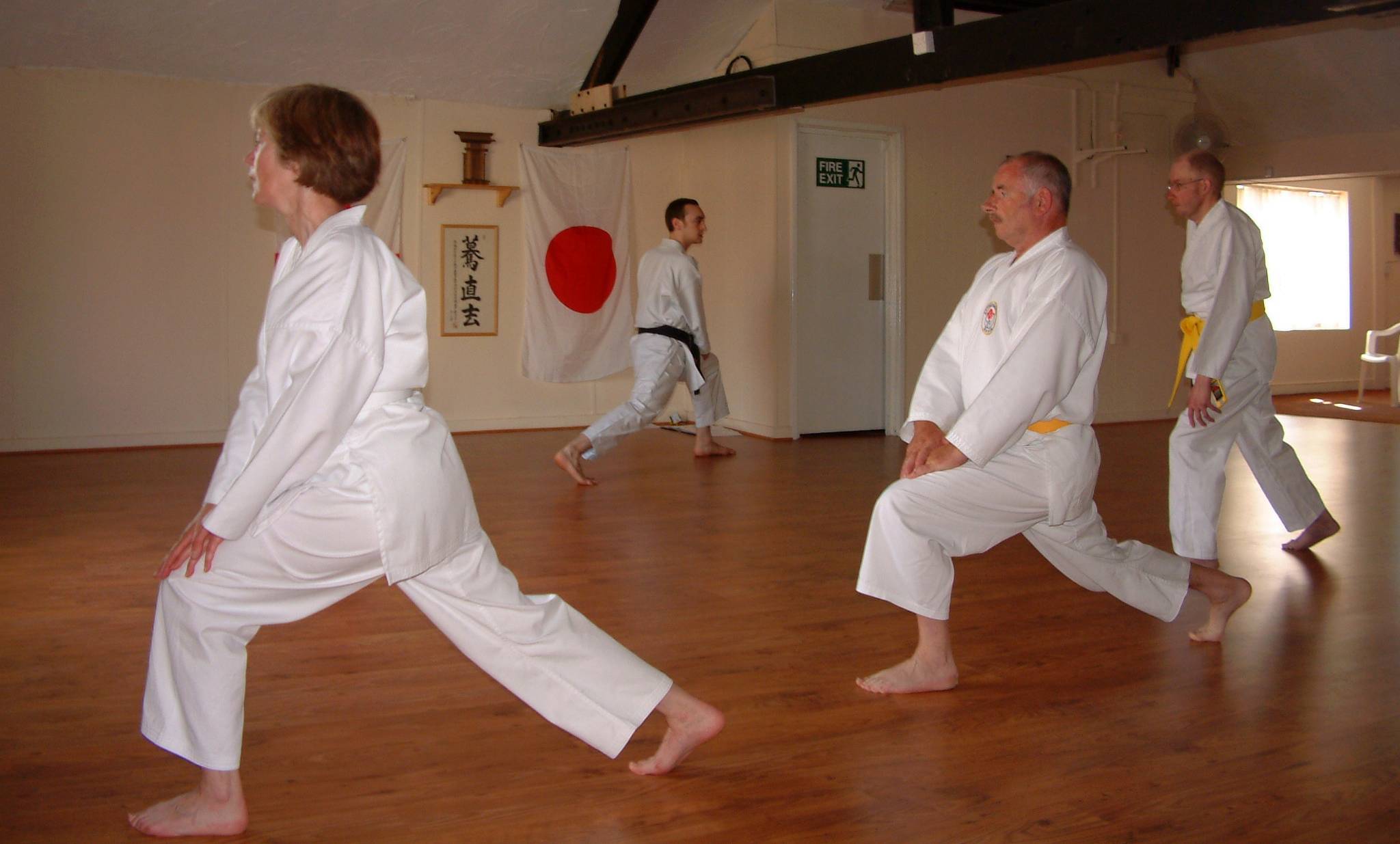 This is an important aspect of Karate and other Martial Arts. Indeed, it is in fact a sign of good health and should be apart of any training regime. However, it is important to note that it should go hand-in-hand with strength and cardiovascular fitness. For example, for a karate student to be able to kick correctly and perhaps to the head, they will need the flexibility as well as the core strength to achieve this.
This is an important aspect of Karate and other Martial Arts. Indeed, it is in fact a sign of good health and should be apart of any training regime. However, it is important to note that it should go hand-in-hand with strength and cardiovascular fitness. For example, for a karate student to be able to kick correctly and perhaps to the head, they will need the flexibility as well as the core strength to achieve this.
What is then flexibility? A dictionary’s definition of “flexibility” is:
“Adjective:
- Capable of being bent, usually without breaking; easily bent.
- Susceptible of modification or adaptation.
- Willing or disposed to yield
Noun
- A flexible substance or material”
Not quite the definition in reference to sport, but after reading this article we can see that the above terms do apply. So the definition in reference to sport is as follows:
“The ability of your joints to move through a full range of motion. Having flexibility in your muscles allows more movement around the joints.”
The above definition is achieved in the exercise and practice performed during a training session. It involves various types of flexibility, which falls into two categories:
- Dynamic Flexibility
The ability to perform dynamic movements of the muscles to bring the limb through its full range of movements.
- Static Flexibility
This can be further sub-divided into two groups:- Static-Active Flexibility
The ability to perform and maintain an extended position. For example, lifting the leg and keeping it high without any external support.
- Static-Passive Flexibility
The ability to perform and maintain an extended position using only your weight, the support of your limb, or some other apparatus such as a chair. An example of this is being able to do the splits, where the floor is supporting your limbs.
- Static-Active Flexibility
The Active Flexibility is harder to develop than Passive Flexibility as it also requires muscle strength to hold and maintain the position of the limb, as in a head kick.
Factors Affecting Flexibility
It is important to the factors that can affect flexibility. They fall into 2 categories:
- Internal Influences
- Type of joint (some more flexibly than others)
- Internal resistance of a joint
- Limited movement from the bony structure
- Elasticity of muscles, tendons and tissues
- Ability in which the muscle can relax and contract
- Temperature of the joint and its related tissues
- External Influences
- Temperature of the environment
- Time of day (most people are more flexible in the afternoon)
- Recovery process after injury
- Age (juniors are generally more flexible than seniors)
- Gender (females are generally more flexible than males)
- Ability to perform a particular exercise perfect (perfect practice will improve this)
- Commitment to achieving flexibility
- Restrictions of clothing or equipment
The most common factors are bone structures, muscle mass, excess fatty tissue and connective tissue.
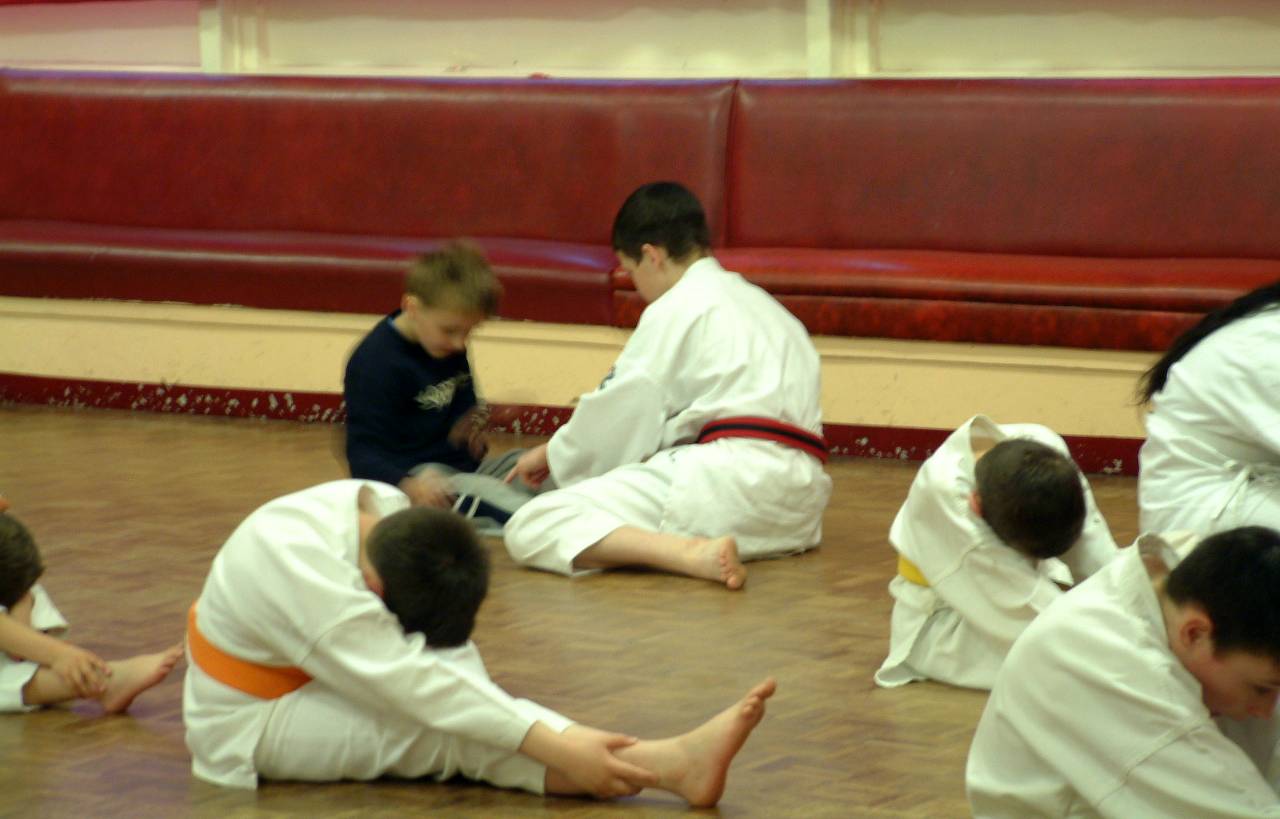 So a student can improve their flexibility by making note of the above influences and improve on those that are within their control. For example, this can be done by increasing the temperature of the joints and related tissues from correct warm-ups; performing the exercise correctly and perfectly, and a commitment to achieve the desired flexibility through stretch regularly. They may be able to influence factors such as changing the temperature of the environment and carrying them out at a certain time of day.
So a student can improve their flexibility by making note of the above influences and improve on those that are within their control. For example, this can be done by increasing the temperature of the joints and related tissues from correct warm-ups; performing the exercise correctly and perfectly, and a commitment to achieve the desired flexibility through stretch regularly. They may be able to influence factors such as changing the temperature of the environment and carrying them out at a certain time of day.
Types of Stretching
There are different types of stretching which are either Dynamic (involve motion) or Static (involve no motion) in nature. The dynamic stretches affect dynamic flexibility, whilst static stretches affect static flexibility and to some degree dynamic flexibility.
The types of stretching are:
- Ballistic
- Dynamic
- Active
- Passive (or Relaxed)
- Static
- Isometric
- PNF
- Ballistic Stretching
This involves the movement of the body to force the limb beyond its normal range of motion. Examples of this can be found during a warm-up exercise, such as burpee, and should be done carefully as it can cause injury.
- Dynamic Stretching
Example of this involves controlled leg and arm swings which takes you gently to the limits of your range of motion. It improves your dynamic flexibility and is found in the warm-up process of a Karate class. It should be carried out in sets of 8 to 12 reps.
- Active Stretching
Also known as Static-Active Stretching. It involves the student holding a stretched position with no assistance other than using their own strength. For example, bringing the leg up high and holding it there in the extended position, as in front or roundhouse kick.This stretch improves active flexibility and strengthens the muscle. They are difficult to hold and maintain. The student should try to maintain the stretch no longer than 15 seconds.
- Passive Stretching
Also know as Relaxed Stretching and Static-Passive Stretching. It involves the student to stretch and hold a position with either another part of their body (e.g. hands) or a partner, or apparatus. For example, bringing your leg up high and holding it there with a partner assisting you. Another example is in the splits, whereby the floor is the apparatus to maintain the extended position. These types of stretches are also very good for rehabilitation and during cool-downs.
- Static Stretching
This is similar to passive stretching but the distinction is as follows:
- Static consists of stretching a muscle to its furthest point and then maintaining or holding that position
- Passive consists of a person who is relaxed while either another person or apparatus brings about the stretch.
- Isometric Stretching
This is a type of static stretch which involves resistance of the muscle. Foe example, by applying manual resistance to the limb, or having a partner, or apparatus to do this resistance. Such as using the wall to provide resistance as you push into this while stretching your calf-muscle. This type of stretch is not recommended whilst bones are still growing. A way to perform these are:
- Assume the position of the passive stretch
- Tense the stretched muscle for 7 to 15 seconds (e.g. against some force that will not move)
- Then relax for at least 20 seconds
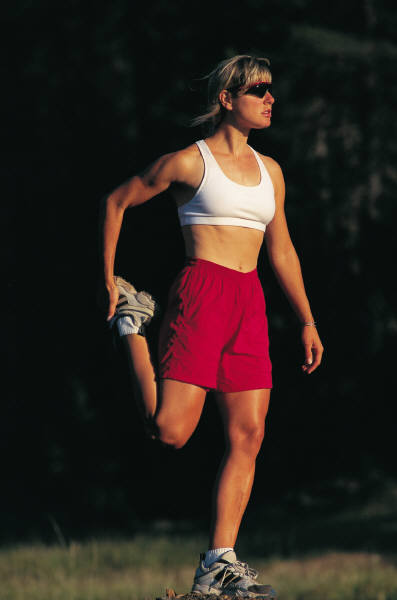 This technique involves a muscle to be passively stretched, and then contracted isometrically against a resistance, whilst being stretched, and then passively stretched again through an increased range. Although these can be done on your own, they are normally carried out with a partner to be more effective.
This technique involves a muscle to be passively stretched, and then contracted isometrically against a resistance, whilst being stretched, and then passively stretched again through an increased range. Although these can be done on your own, they are normally carried out with a partner to be more effective.
- PNF Stretching
This is the fastest way to increase static-passive flexibility. This is the combination of passive stretching and isometric stretching in order to achieve maximum static flexibility.Common PNF stretching technique is:Hold-Relax Stretch: Go into a passive stretch, and then contract the muscle isometrically for 7 to 15 seconds. Now relax for 2 to 3 seconds. Then go into a passive stretch again but this time stretching the muscle even further and hold this for 10 to 15 seconds. After this relax for 20 seconds before performing a second set.
It is recommended to perform PNF stretching 3 to 45 times for a given muscle group, resting 20 seconds between each set.
To Sum Up
So stretching can do more than just increase your flexibility, there are other benefits associated with it, such as:
- Improved physical fitness
- Improved ability to learn and perform skills
- Increased mental and physical relaxation
- Improved body awareness
- Reduce risk of injury to joints, muscles and tendons
- Reduced muscle soreness
- Reduced muscular tension
- Increased suppleness
Some of the most common mistakes made by students during stretching are:
- Improper warm-ups
- Inadequate rest between workouts
- Overstretching
- Performing the wrong exercise
- Performing exercise in the wrong sequence
I hope this has been of some use and that you have found this an interesting article? In part 2 I will further explain about the warm-up, exercise order and when to stretch.
